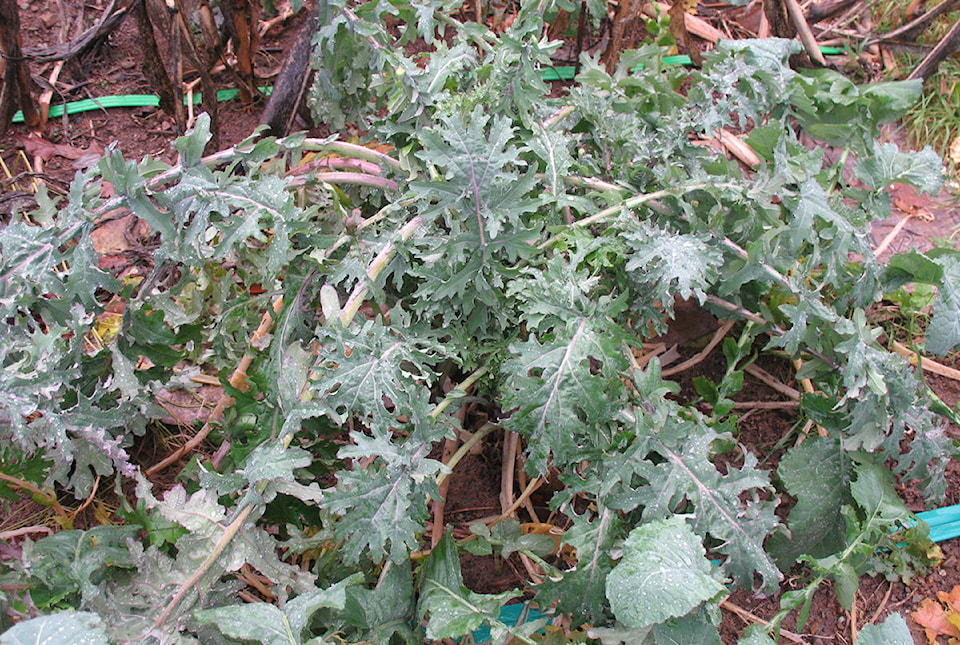By Mary Lowther
Soup was Mom’s forté, but she didn’t call it soup. All her delicious elixirs were dubbed “kale”, even if they never contained the stuff. “That’s what we called it back in Scotland,” she explained, so presumably soups back then were based on kale, and it probably explains why mom was so healthy. She was never sick growing up and developed strong bones and teeth even though she never drank milk.
Her traditional kale-rich diet explains her robust health and bone strength because the Aggregate Nutrient Density Index gives kale the highest nutritional score possible. Kale contains mega amounts of vitamins A, C and K plus iron and calcium. Dr. Annemarie Colbin, author of the book The Whole-Food Guide to Strong Bones, says that with protein, kale protects bone health better than calcium from dairy. Abundant in trace minerals and phytonutrients, kale also has few oxalates. Oxalates interfere with the uptake of calcium and magnesium.
Some paleobotanists speculate that forerunners of kale may have fed the dinosaurs since fossilized leaf impressions resemble today’s kale. Egyptians ate it, 4,000 year old Chinese pottery contains fossilized kale remnants, and an ancient Turkish saying translates as: “Every leaf of kale you chew adds another stem to your tree of life.” I could use another stem or two.
Given how seedlings from kale that has gone to seed in my yard continue to pop up every year in sidewalk cracks, behind the shed and everywhere there’s a spare inch of soil, I understand how widespread it has become. Because it’s so easy to grow, one might be tempted not to bother developing rich soil for it, but that would be a mistake. I want ALL my food to contain as much nutrition as possible to add a healthy stem to my tree of life, so I give kale the same tender care as everything else and it rewards me all year long.
Although kale will grow in the shade, the most nutritious results come when they receive at least six hours of sunlight a day. I prepare the soil in the spring by digging under the winter cover crop then spreading a quarter inch of compost and letting that sit for two weeks to let the crop degrade and the birds have at the compost. Then I sprinkle my fertilizer over the bed at the rate of four litres per hundred square feet and rake that in, then sow the kale seeds down the bed in a row because that’s where I’ll lay the soaker hose once the seedlings are up. As I thin them out gradually to their final position at 18 inches apart, I eat the thinnings.
Here’s a nice recipe for Kale, Fish and Potato Cakes:
4 cups mashed potatoes (I leave skins on for more nourishment and fibre)
¼ tsp. pepper
½ tsp. salt
1 tsp. dried dill
¼ tsp. nutmeg
2 cups finely chopped kale
¼ cup finely chopped parsley
2 eggs, lightly beaten
¼ cup minced green onions
2/3 cup grated cheese
1 pound fish (canned or leftover)
Oil for frying ground nuts for coating
Mix everything except the oil and nuts in a large bowl. Form into flattened cakes, coat with ground nuts and fry in oil until nicely browned on both sides. You can add corn to the mixture and serve with salsa or applesauce or maybe butter melted with herbs or lemon or garlic. Fried onions on top might be nice too.
Please contact mary_lowther@yahoo.ca with questions and suggestions since I need all the help I can get.
